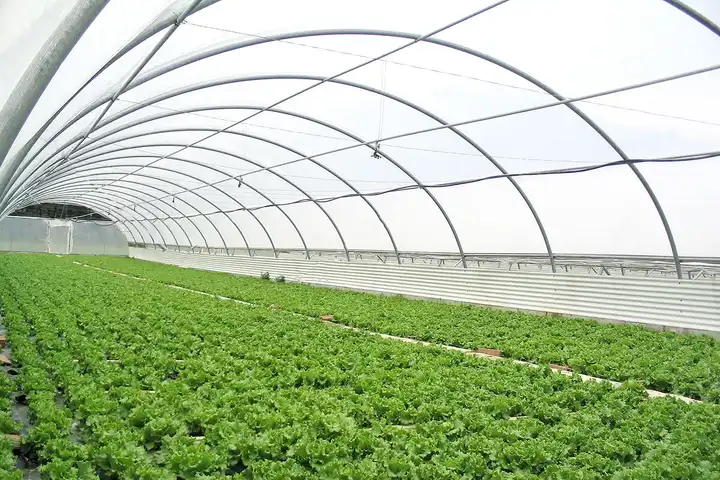A greenhouse tent, also known as a grow tent or indoor greenhouse, is a portable and enclosed structure designed for indoor plant cultivation. It is essentially a fabric or plastic enclosure that creates a controlled environment for plants to grow in an indoor setting.
Here are some key features and characteristics of a greenhouse tent:
- Structure: Greenhouse tents typically consist of a lightweight metal frame, usually made of poles or bars, that provides structural support. The frame is covered with a durable fabric or plastic material that acts as the enclosure.
- Enclosure Material: The enclosure material of a greenhouse tent is often made of reflective and lightproof fabric or plastic. It is designed to be waterproof, durable, and resistant to tearing. The interior surface of the enclosure may have a reflective coating to maximize light distribution and enhance plant growth.
- Size and Portability: Greenhouse tents come in various sizes, ranging from small units suitable for a few plants to larger tents that can accommodate multiple plant varieties. They are designed to be portable, allowing growers to easily assemble, disassemble, and move the tent as needed.
- Light and Ventilation: Greenhouse tents typically have openings or flaps that can be used for ventilation and to accommodate grow lights or exhaust fans. These openings help regulate temperature, humidity, and airflow within the tent, creating an optimal growing environment.
- Interior Features: Greenhouse tents often include features such as hanging bars or hooks for attaching grow lights, ventilation systems, and accessories like fans or filters. Some tents may have multiple compartments or shelves to facilitate plant organization and maximize space utilization.
- Environmental Control: The enclosed nature of greenhouse tents allows for better control over environmental factors such as temperature, humidity, and light intensity. Growers can adjust these parameters according to the specific needs of their plants, creating a favorable and consistent growing environment.
- Pest and Disease Control: Greenhouse tents provide a barrier that helps protect plants from pests, insects, and some diseases. The enclosed structure helps prevent infestation by keeping unwanted organisms out, reducing the risk of damage to the plants.
- Easy Setup and Maintenance: Greenhouse tents are designed for easy setup and require minimal tools or construction expertise. They are relatively low-maintenance and can be easily cleaned and maintained compared to larger, permanent greenhouse structures.
Greenhouse tents are popular among indoor gardeners, hobbyists, and individuals with limited space for outdoor gardening. They allow for year-round plant cultivation, provide a controlled environment, green house tent and offer flexibility in terms of location and setup. Greenhouse tents are particularly suitable for growing small to medium-sized plant varieties, herbs, vegetables, or starting seeds before transplanting them to an outdoor garden.
What is a greenhouse tent for?
A greenhouse tent, also known as a grow tent or indoor greenhouse, is primarily used for indoor plant cultivation. It provides a controlled environment for plants to grow and thrive, regardless of the external weather conditions.
Here are some specific purposes and benefits of using a greenhouse tent:
- Year-Round Plant Cultivation: With a greenhouse tent, you can grow plants indoors throughout the year, regardless of the season. This is especially useful in regions with harsh climates or limited outdoor gardening space. The controlled environment allows for extended growing seasons and the cultivation of plants that may not be suitable for the local climate.
- Climate Control: Greenhouse tents enable growers to have precise control over environmental factors such as temperature, humidity, light intensity, and airflow. This control allows for optimal growing conditions, ensuring that plants receive the necessary conditions for growth and development.
- Protection from External Factors: The enclosed structure of a greenhouse tent provides protection for plants against external factors such as extreme temperatures, frost, wind, rain, and pests. It creates a barrier that helps maintain a stable and favorable microclimate for plant growth.
- Light Management: Greenhouse tents often have reflective interiors or reflective coatings that maximize light distribution within the growing space. This ensures that plants receive adequate light for photosynthesis and growth. Additionally, the interior of the tent can be equipped with grow lights to supplement natural light or provide illumination in the absence of sufficient sunlight.
- Space Optimization: Greenhouse tents are designed to make efficient use of space. They come in various sizes, allowing growers to choose a tent that fits their available space and plant quantity. The vertical height of the tent can be utilized using hanging bars or shelves, maximizing the use of the available area.
- Pest and Disease Control: The enclosed structure of a greenhouse tent helps protect plants from pests, insects, and some diseases. It acts as a physical barrier, minimizing the risk of infestation or disease transmission from external sources.
- Privacy and Security: Greenhouse tents provide privacy for indoor gardeners who may not want their plants to be visible to others. They also offer added security by keeping valuable plants hidden from view.
- Easy Setup and Portability: Greenhouse tents are portable and relatively easy to set up. They require minimal tools and construction expertise compared to permanent greenhouse structures. This portability allows growers to relocate the tent if needed or adjust its position to optimize factors such as sunlight exposure or ventilation.
Overall, a greenhouse tent provides a versatile and controlled environment for indoor plant cultivation, allowing individuals to grow a wide range of plants, including herbs, vegetables, flowers, and even exotic or sensitive plant species. It offers the flexibility to create an optimal growing environment regardless of external conditions, making it a popular choice for home gardeners, hobbyists, and indoor plant enthusiasts.

